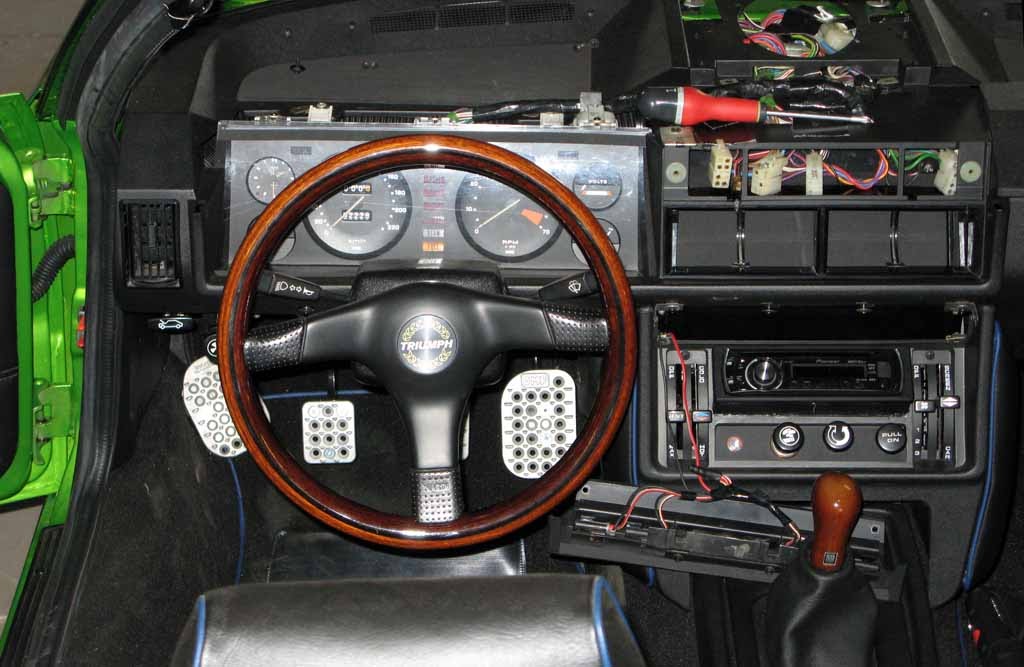Over the last few weekends I have been re-installing the wiring loom and connecting everything up. That I didn't label anything when I took the loom out over 20 years ago hasn't helped, but I believe I have done a good job getting everything back in and retro-labelling using the circuit diagram and a spare loom. I'm not rushing this job, as I want all the electrics to work before refitting the dash etc.
So, after much repairing of the loom I applied some 12v power from a battery today (the engine isn't in, so all engine wires etc were insulated with tape to stop any shorting). My view was that any number of things would happen, namely (a) nothing would work (b) it would blow all the fuses, catch fire and burn my garage down
Working: Rear side lights, rear stop lamps, reverse lamps, boot lamp, indicators, horn, centre console green lamps, cigar lighter lamp, instrument back lighting, instrument turn lamps, clock, front side lights, front indicators.
Working but weirdly: Numberplate/licence plate lamps in the boot/trunk lid (dim), hazard lights (they did work for a while but now don't), headlamp lift motors. One is always up and doesn't move, the other goes up when it should be down and vice versa
Not working at all: interior light, instrument cluster vertical centre warning erm things (choke-on lamp, ign, oil brake, coolant etc), washer pump, wiper motor (which is getting very hot. I did say it might burst into flames...
I have listed these just in case someone with better knowledge than me may say "aha, some of those things share an earth or +VE feed in common".
One other thing, I have a mystery around the low fuel delay unit but I may be confusing it with something else. I have four wires, the colours of which according to the book correlate exactly with this part. However they are after the grommet on the loom which exits I think in the same hole used by the wires which feed the low brake pressure switch which screws into the bottom of the brake master cylinder. That would position the low fuel delay unit somewhere in the engine bay, right in the corner of the front bulkhead/RH inner wing on this RHD car, roughly opposite where the washer pump goes on the other side of the car. I almost remember some rusty thing being there when I took the car apart. There are correlating holes there for it, or something similar.
However, everything I read says the low fuel delay unit is fitted somewhere inside the car, perhaps underneath the instrument cluster.
So, am I confusing two parts?
Thanks all
John







